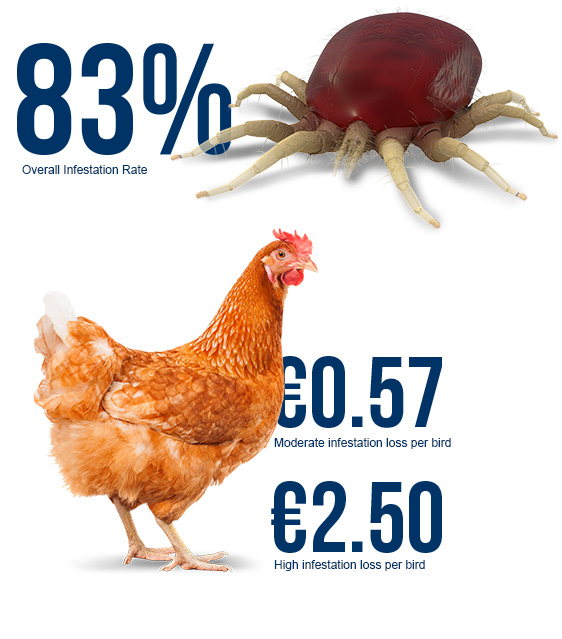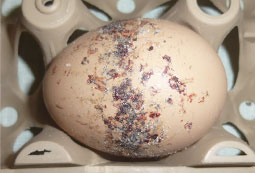

The Red Mite Epidemic
Recent surveys have confirmed the extremely high and increasing prevalence of infestations with poultry red mites in Europe. In fact, the average overall infestation rate of European layer houses is 83 percent.1

Mite infestations cause major physiological and economical damages. According to studies by a layer industry expert, productivity losses can reach €0.57 per hen per year in case of moderate mite infestation and up to €2.50 in high infestations.2 In Europe alone, the approximate total annual cost of red mite infestations totals €360 million, with more than 300 million hens in all production types suffering from infestations.3
Current management methods lack sufficient efficacy to keep mite infestations under control at many poultry farms and often pose safety threats for both birds and humans.


Both shell thinning and shell spotting can be attributed to the impact of
Dermanyssus gallinae.4
1 Mul M. Fact sheet: the poultry red mite, Dermanyssus gallinae (De Geer, 1778) A small pest that packs a big punch. Wageningen UR, 2013.
2 Kilpinen O. How to obtain a blood meal without being eaten by a host: the case of poultry red mite, Dermanyssus gallinae. Physiol Entomology 2005; 30:232-240.
3 Mozafar F. 2014. Die rote vogelmilbe, eine grosse herausforderung für eierproduzenten. Frühjahrveranstaltung; Deutchen Vereinigung für Geflügelwissenschaft. Leipzig, 11-12 März 2014.
4 Mul M. Control methods for Dermanyssus gallinae in systems for laying hens: results of an international seminar. World Poult Sci J 2009; 65:589-599.



The fight against red mites.
Poultry red mites are difficult to control, and infestations grow rapidly.
Many solutions have been developed in recent years, including chemical
control, biological compounds, heat treatments and more.
